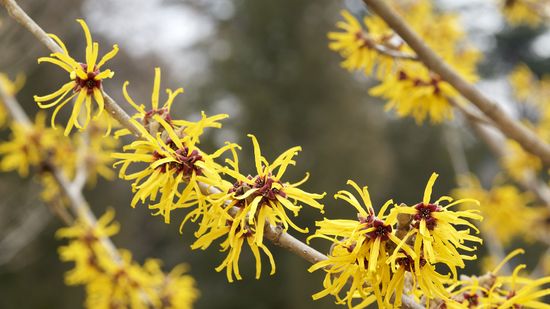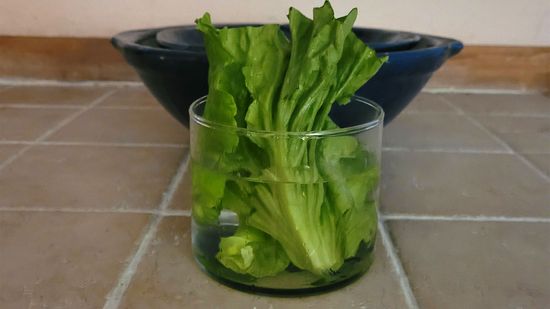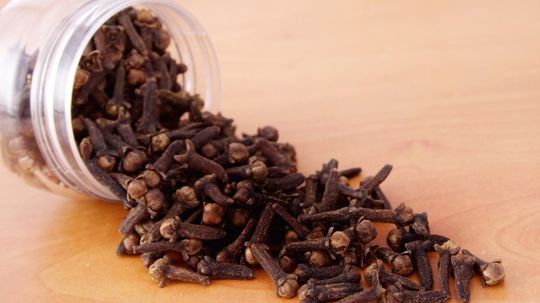Natural Medicine
The Natural Medicine Channel details aromatherapy, herbal remedies and home remedies. In addition, the channel offers a vast amount of information on alternative medicine and traditional Chinese medicine.

Sound Frequency Healing: The Power of Vibrations for Well-Being

Himalayan Salt Lamps: Health Benefits or Hype?

Does Kombucha Really Have Health Benefits?

Oil Diffusers Make Your House Smell Great, But Are They Safe?

Essential Oils Profiles

How to Treat Common Conditions With Aromatherapy

Kava Is Natural and Legal, But Is It Safe?

6 Handy Uses for Witch Hazel

Why People Are Downing Chlorophyll, the Plant Pigment

Can Lettuce Water Really Help You Sleep?

9 Refreshing Uses for Peppermint Oil

How to Safely Use a Neti Pot

What Does Science Say About the Health Benefits of Cordyceps?

How to Treat Fatigue with Traditional Chinese Medicine

How to Treat Headaches with Traditional Chinese Medicine
Learn More / Page 6
Painful herpes outbreaks can be shortened and relieved when you learn how to treat herpes with aromatherapy. Find out how to prepare a mixture of essential oils for the affected area.
Itchy, red hives are caused by food or other allergies, but if you have them, you just want to make the itching stop! Follow these tips to get rid of hives with aromatherapy.
Nothing is worse than a bout of nausea, intestinal gas, or stomach pains caused by stress, so find relief naturally with a selection of essential oils. Learn how to use aromatherapy for nausea relief.
Advertisement
You don't need to just put up with the irritability, bloating, and pain that many women experience from PMS. Instead, you can make these simple aromatherapy remedies to help soothe the symptoms.
Singers have always used essential oils to treat sore throats. You can too with our remedies. The spray is both an anti-inflammatory and an antiseptic. The neck wrap soothes the pain of swollen glands.
Enjoy a hot bath or a soothing massage and relax with our aromatherapy mixtures. The essential oils they contain are known to relieve stress, and you can make them yourself with our easy instructions.
Fragrances can lift one's mood, so aromatherapy for depression uses the scents of essential oils to ease anxiety, paranoia, and mental fatigue. Learn how to use neroli or petitgrain and other essential oils as antidepressants.
Advertisement
Working at a desk or computer screen can leave your eyes over-tired. But there are simple ways to treat eye strain with aromatherapy. Learn how to make warm or cool compresses with essential oils.
The scent and flavor known as wintergreen owes its origin to birch, which also flavors many beverages and candies. This essential oil has astringent properties and can prevent dandruff. Learn how birch is used in aromatherapy.
Wardrobes and chests made from cedarwood will repel insects. Cedarwood essential oil is known to fight acne, promote circulation, and clear mucus. Use cedarwood oil to treat insect bites. Learn how cedarwood is used in aromatherapy.
Chamomile is most familiar as a tea known to relax nerves, settle the stomach, and enhance appetite. This essential oil has is gentle enough to use on infants and is good for many skin ailments. Learn how chamomile is used in aromatherapy.
Advertisement
Cinnamon popularity as a spice has overshadowed its many healing properties. Cinnamon essential oil is used as a mental and physical stimulant. This essential oil has digestive and mood-enhancing properties. Learn how cinnamon is used in aromatherapy.
Clary sage has aromatherapy applications that enhance clarity of mind and fight depression. Clary sage essential oil flavors many beverages, candies, and clove cigarettes. Learn how clary sage is used in aromatherapy.
Cloves have many stimulating properties in aromatherapy. This essential oil has antifungal and antibiotic properties, and can soothe a teething baby's gums. Learn how clove is used in aromatherapy.
Cypress essential oil is great for relaxing muscles, and promoting clarity of thought. This essential oil has antiseptic and blood-stanching properties. Learn how cypress is used in aromatherapy.
Advertisement
Highly antiseptic eucalyptus oil has long been used to treat all manner of infections. This essential oil has antiviral and antibiotic properties, and can relieve joint pain. Learn how eucalyptus is used in aromatherapy.
Fir is well known as a popular Christmas tree. The tree and its scent were associated with rebirth. Fir essential oil has antiseptic properties and can soothe muscle pain such as rheumatism. Learn how fir is used in aromatherapy.
Frankincense essential oil is widely associated with religious ceremonies and events, and it is a valuable substance for its spiritually uplifting qualities. Learn how frankincense is used in aromatherapy.
Ginger is a popular sushi sidekick for a reason; it has many digestive benefits. Ginger also flavors many beverages and candies. This essential oil has anti-inflammatory properties. Learn how ginger is used in aromatherapy.
Advertisement
Jasmine's reputation as an aphrodisiac may overshadow its other medicinal applications. This essential oil flavors many teas and can be used as a soothing balm that promotes mental acuity. Learn how jasmine is used in aromatherapy.
Juniper berry essential oil has antiseptic properties, and can also relieve sore muscles. This essential oil has antiviral and antibiotic properties. Juniper can also combat urinary tract infections. Learn how juniper berry is used in aromatherapy.
Lavender is an ancient and popular essential oil with antiseptic properties. Lavender is also shown to improve mental acuity. This essential oil can relieve cramps and soothe muscles. Learn how lavender is used in aromatherapy.
Best known for its clean, sharp fragrance, lemon is a major ingredient in many cleaning products, beverages, cologne, medicines, and more. Learn how lemon essential oil and lemon flowers are used in aromatherapy.
Advertisement
Lemongrass is an important medicinal and culinary herb. Its essential oil, known for its lemon/herbal fragrance, is one of the most popular in the world. Learn how lemongrass is used in aromatherapy.
Myrrh is a spiny tree whose essential oil is distilled from its sap. Myrrh has been used since antiquity to treat a variety of skin and mouth conditions. Learn how myrrh is used in aromatherapy.

